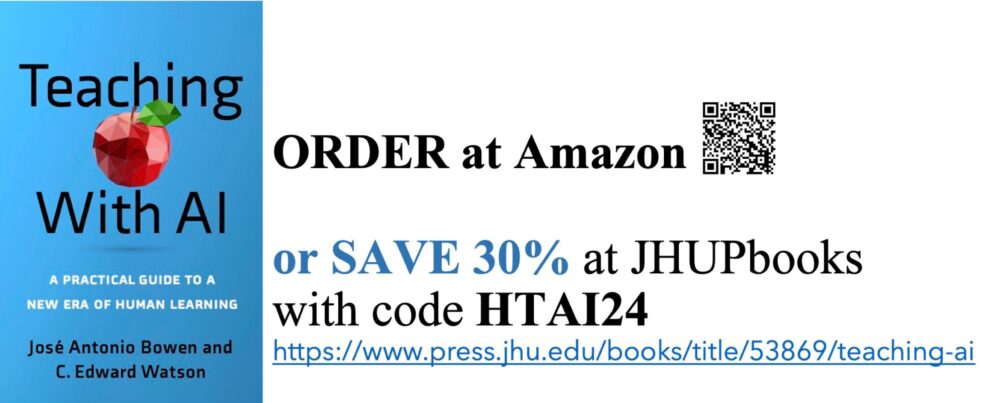I have always been interested in inclusive teaching and with the changing demographics of higher education, I’m creating a workshop for college faculty, which I will add to the technology, course design and nudge workshops I have been doing for years. (This is also starting to form as the next book project after I finish the 3Rs and the Nudge Learning book: there is a LOT of overlap with my work on relationships, communal thinking and understanding how we can overcome the difficulties of change.)
To me, the core principle of inclusive teaching is connected in every way to the design ideas I’ve advocated for years: Can we design better and more inclusive practices that help everyone but have a disproportionate positive effect on new, first-gen, non-trad or under-represented students. (john a powell calls this “targeted universalism.” (2008, Post-Racialism or Targeted Universalism Denver University Law Review, 86, p. 785-806)
Transparency and rubrics, therefore, are already inclusive pedagogies. Knowing what is expected and getting clear instructions helps everyone, but it is even more valuable to first-generation and other students who are trying to unravel the code of our academic culture.
There is a lot of literature that looks specifically at racial and other equity in the classroom but not as much (that I have yet encountered) in terms of general pedagogy guidelines. I am most interested in reaching faculty who teach general subjects, especially gateway courses and especially STEM.
I have started to draft a few core practices:
- Acknowledgement and Self-Awareness: understand, articulate and examine human biases and your cultural “common sense”—all of us think with an accent. Inclusive teaching is a mind-set shift form “weeding-out” to reaching everyone.
- Demonstrate Caring and Support: Acknowledge differences in student backgrounds and demonstrate your own failings often. Take the time to learn names, articulate difficulties (that was a hard test) and build relationships.
- Transparency: Structure, clarity, scaffolding, checklists, and rubrics help everyone. Make visible your own assumptions, biases and expectations for teaching and learning. We all have them. More structure can be a huge equalizer (explaining the rules and why we are having discussion for example).
- Content: can you diversify your content? If not, can you diversify perspectives? Ken Bain demonstrated long ago that all students benefit from hearing and understanding that our perspectives and disciplinary knowledge change. Can you include a non-Western critique or related version of this text or idea?
- Diversify Examples and Analogies: Do your test questions, essay examples and problem sets use a variety of names and analogies that will connect with a wide variety of students? (I have a further project to create a shared set of inclusive math problem sets with more diverse names and analogies. I don’t care when train A will catch up with train B.)
- Different Questions: The science you teach is determined, but what questions led to the discover of that science? Who benefited from that research and who sacrificed? Why were there not more women scientists or composers? Simply allowing the question creates agency for students.
- Highlight scholarly achievements of minorities: You can and should continue to discuss the contributions of White Europeans, but can you also find others to name and highlight
- Ask for early and specific feedback: Tell students you are trying to be more inclusive and asking for their help.
- Provide early feedback and assessment: Be the tennis net with immediate and non-judgemental feedback. Learning requires practice constant feedback.
- Vary teaching strategies: You don’t need to abandon all lectures, but can you should consider who is being left out with each type of teaching. Can you try some different class exercises, strategies, discussion techniques? Technology, for example, can be a useful way to provide an additional different forum and format for discussion or allow for anonymous suggestions, responses, ideas or feedback
- Vary demonstrations of learning: You do not need to abandon all tests, but you do need to consider who is left out can you also create presentations, short-papers, creative videos and alternative assignments that might provide different opportunities to demonstrate learning?
- …lots more to do
Teaching is an equity enterprise: we should judge our success by the learning from the bottom half of the class. (The top half of the class are more likely to be successful even without us.) It is a tendency of humans (including teachers) to assume that our success is a result of our own behavior and our losses due to some other interference or what social psychologists call the fundamental attribution error, correspondence bias or overattribution.)
Inclusive teaching is good teaching for everyone. And if it is really good teaching then it should always be inclusive. Quite a lot of what I think of as inclusive teaching (more structure, lower stakes for exams, demonstrate caring, building relationships) are the same things I think of as good for all teaching, but I think there is value in re-framing all of this as inclusive teaching now.
This project is at its very beginning, but I would welcome texts, suggestions, connections and recommendations to other people working in this space.
